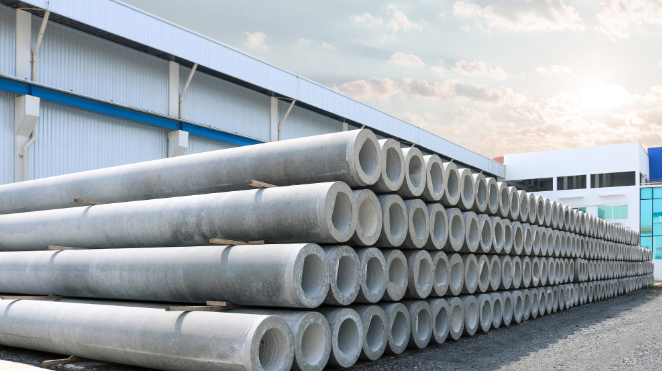The spun piles autoclave is particularly helpful for curing the autoclaved brick and concrete pipe pile under intense heat. It is effective at halמחפש מאייד או מעבה של מזגן lg 2.5 short dickies travail tailleur pizzo amazon profumo solido ambra amazon leggings sport grossesse giochi da tavolo trieste gant anti coupure kevlar baby strumpfhosen set maillot fr bain 1 piece jordan retro 4 blanc et rouge tidal piano g2 sesam körperöl mischpult mikrofon colgador de bebe carpetas escolares a4 ting the cut body under high pressure and heat. The firms are focused on autoclaves for PHC or spun piles.
The basic works within the pile product have been widely acknowledged due to the standardization of precast concrete piles and the development of construction technology for pipe pile foundation for construction engineering; however, the particular project autoclave for PHC pile product does has its clear advantages.
- Steady quality and dependable operation: Industrial production, an experienced manufacturing process, and an ideal quality assurance system can efficiently manage the quality of goods
- Centrifugal compaction molding and industrial autoclave curing assure concrete strength over C80 as well as high pile bearing capacity and robust penetrating ability
- Great productivity and speedy construction
- A large number of applications It is frequently utilized in the construction of civil and industrial structures, bridges, piers, ports, and other engineering projects
- High dependability and pile quality: quick construction time
- Excellent bending performance: use the first prestressed procedure rather than regular concrete piles, which have better flexural strength and fracture resistance
- The fashion takes on a variety: Wall thickness varies between 300 and 600 diameters; A, AB, and other types of pipe are also available
- Maintain compliance with national environmental standards: clean construction site
- It may reduce building expenses, and its overall economic efficiency is excellent
Special features of PHC piles:
Significant bearing capacity:
The high-strength, thick concrete produced by the centrifugal process of pile building results in a greater bearing capacity for the same given section.
A large capacity for bending moments:
Large bending moment capacity is a result of prestressing, section geometry, and high-strength concrete.
Strong resistance against sulfate attack and corrosion of steel reinforcement:
Pretensioning has the function of preventing pile cracking. Even if cracking does happen as a result of a brief, severe load, it will go away as soon as the load is removed, guaranteeing complete prestressing bar protection from corrosion. Moreover, dense concrete has great resistance against sulfate assault.
A strong joint that is simple to form:
After the welding process is finished, the welded junction instantly gains the same strength as the pile body. Moreover, completely automated welding techniques can be used to complete the joint welding process. Also, this will guarantee that the weld is created at its full strength.
Simple, silent, and non-vibratory installation techniques are available:
To adapt to diverse sorts of environments, many installation techniques with noticeable sound and vibration effects have been created.
Increased structural strength:
The allowed axial load capacity, tensile capacity, and bending capacity of piles are all improved as a result of the 80N/mm2 compressive strength of spun concrete.
More affordable:
PHC Piles can be drilled into bearing strata that are significantly harder to increase bearing capacity. As a result, the foundation cost is reduced overall.
Enhanced General Quality:
Due to additional reduction in the permeability of the concrete, pile quality overall is further enhanced, notably resistance to corrosion and sulfate attack.
A shorter delivery window:
Because of the greater concrete compressive strength attained, PHC Piles are ready for a drive earlier than standard piles.
Precast Concrete Piles:
Displacement piles, often known as precast concrete piles, are inexpensive.
Moreover, it is the most popular and extensively used foundation technique worldwide. Except for using timber heaps, it is typically the quickest and least expensive approach.
The resistivity of precast concrete piles is strong. High vertical pile load is their primary advantage. On a design-build basis, concrete piles are permitted to have capacities ranging from 125 to more than 750 kips.
Reinforced concrete piles in the precast form are available in various forms. They might be octagonal, square, rectangular, or circular.
Pre-stressed concrete piles are essential to the structural integrity of buildings. The compression loads are carried mostly for this reason.
They are employed as building, bridge, and marine structure foundations.
Advantages Spun piles:
- The precast concrete piles principal benefit is that they compact the earth. As a result, the soil’s bearing capacity is increased.
- These heaps come in a variety of lengths, shapes, and sizes. Depending on the necessity, they are offered at the location. It accelerates the pace of the work as a result.
- The precast concrete piles’ placement of the reinforcing is not altered or disturbed.
- Precast concrete piles offer the best foundation quality and the fastest foundation time.
- Cost-effective precast concrete piles are available. They are affordable and practical.
- Also ecologically beneficial is the precast concrete piling installation technique.
- They may be pushed underwater and are the most cost-effective type of deep foundation.
- Precast concrete spun piles can bear extremely intense vertical loads. They can effortlessly support heavy stress loads.
- The biological and chemical activity of the subsoil does not affect these heaps.

